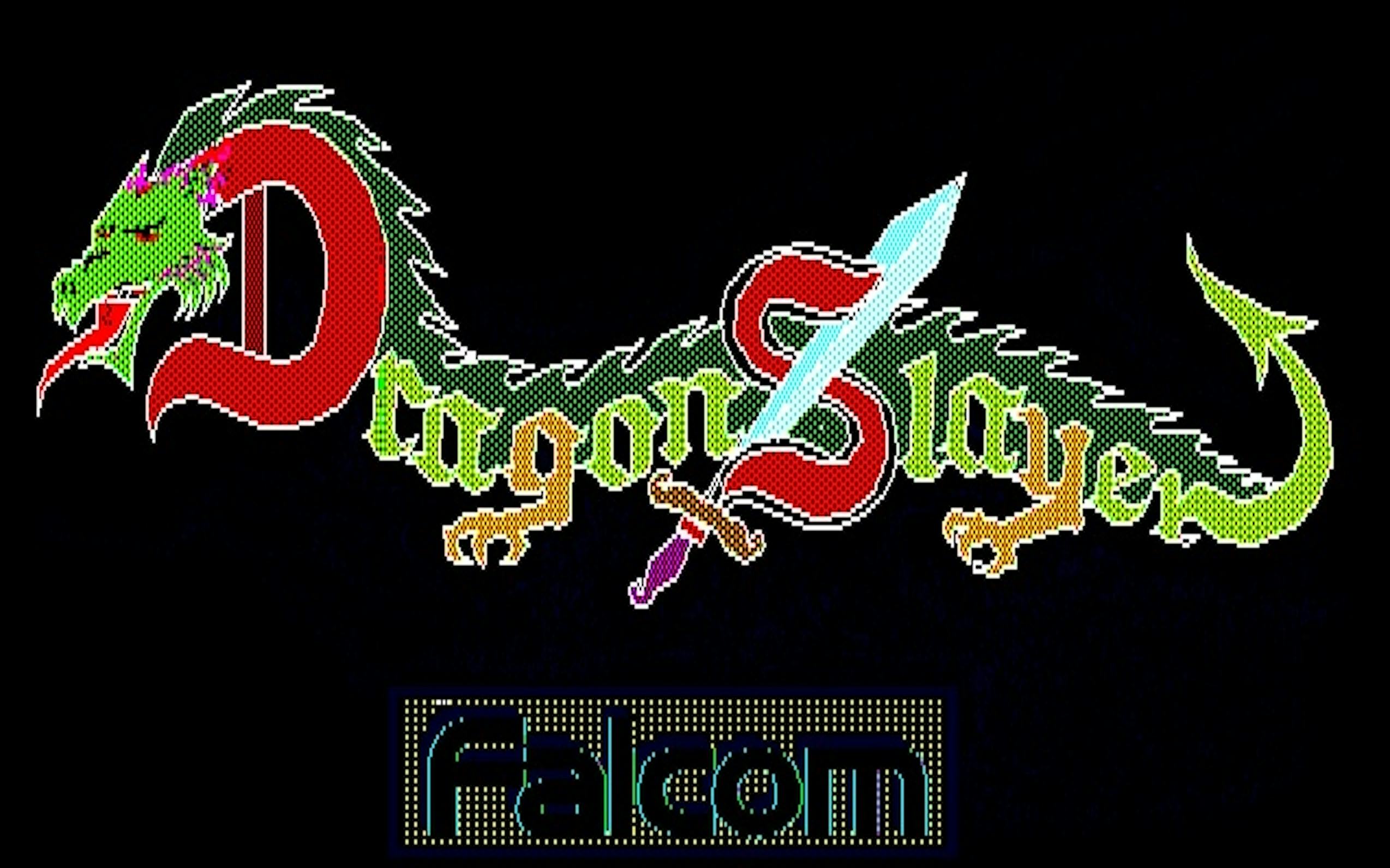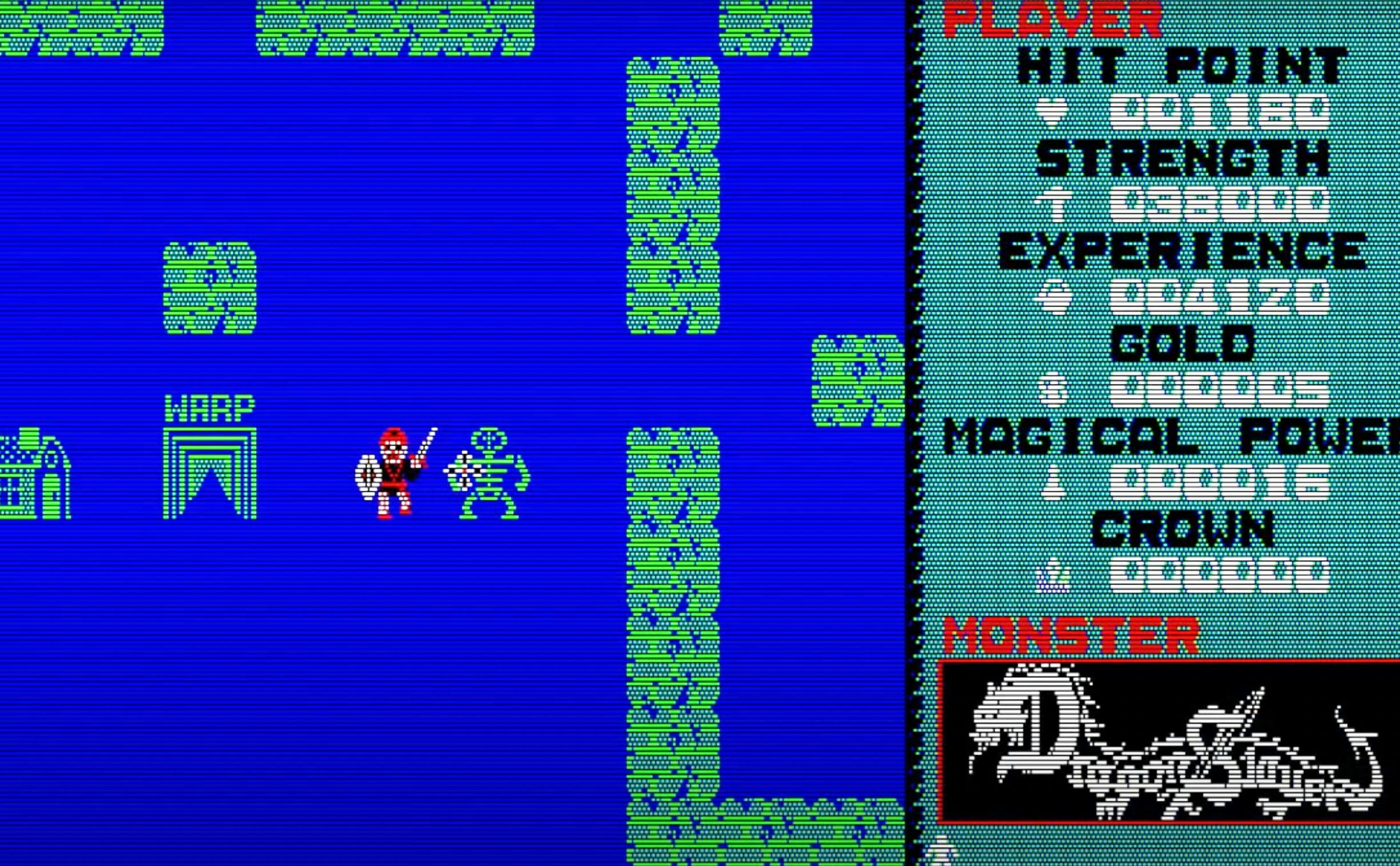
Prior to the 1980’s, the term “roleplaying game” wasn’t exactly mainstream. In fact, although Dungeons & Dragons was first released in 1974, it wasn’t until the 1981 basic set was released that this kind of terminology began to catch fire around the world. And like a mischievous creature traversing a fairy tale, the concepts of fantasy games planted seeds and clues across different media, including a jump from the world of tabletop games to the world of early video games.
In 1984, one of the most formative fantasy roleplaying games was Dragon Slayer. On September 10 of that year, the first version of Dragon Slayer was released on PC, spawning an entirely new genre that we’re still playing today. And although it's clunky by today’s standards, the first Dragon Slayer was still challenging, intelligent, and more innovative than anyone realized at the time.
What was Dragon Slayer?

Not to be confused with the the 1981 fantasy film Dragonslayer (all one word), the 1984 video game Dragon Slayer was created by Nihon Falcom and Yoshio Kiy, and initially released for PC owners in Japan. At a glance, the gameplay resembles a kind of maze in which you are searching for items — keys, jewels, etc. — in order to get to the next stage of the game. Commonly now called a “dungeon crawl” style of gaming, the biggest innovation of Dragon Slayer was its combination of overhead map-based gaming with real-time action. This arcade style may have resembled something out of Pac-Mac at first glance, but the interesting detail that truly changed all our lives was the fact that Dragon Slayer melded those arcade mechanics with roleplaying lore and outcomes.
In other words, an arcade fan in the 1980s could enjoy Dragon Slayer for its supposed simplicity, but that arcade-ish elegance was nuanced, thanks to additional fantasy roleplaying elements. The ambitions of this game were, of course, larger than its technological abilities. And, in some ways, the game's overall scope proved to be literally too big for any platforms it was later ported to. To this day, players report that the 1990 Game Boy version could not be completed ever, because there was no way to save the game and the batteries would expire before the end.
This is an interesting metaphor for the first Dragon Slayer; it was a thrilling game that an ordinary person perhaps never completed. And that’s not because the game was too hard, but simply that it was too big for the time it was released.
The Zelda legacy of Dragon Slayer

While it's very fun to track down various emulators of the first Dragon Slayer — and many players correctly point out the loose sequels were a bit better — the true legacy of this game isn’t within its own franchise. Instead, the ramshackle knight-ish warrior, collecting items, going on a quest, and being controlled by fantasy roleplaying rules, will remind most modern gamers of one thing: Zelda.
Like Dragon Slayer, the first version of The Legend of Zelda appeared in Japan before going worldwide. And with that very first Zelda game, the influence of Dragon Slayer is readily apparent. The mechanics are similar, the dungeon crawl style is easier to manage, and overall, Zelda is a game that was simply better designed.
Crucially, Zelda also was a game that could be completed by its players, and, of course, translated very well on other platforms. The specific lore of Zelda helped the game too, instead of the fairly generic fantasy world suggested by Dragon Slayer, the first Zelda game had lore and a story that felt more lived-in and deeper. To put it another way, the art created for Zelda tended to live up better to the gameplay than the images for Dragon Slayer.
That said, forty years ago, Dragon Slayer was like one of those eggs that people stumble across in fantasy stories all the time; not knowing they really have a dragon egg. A magical phenomenon that would redefine gaming was about to hatch in 1984, but nobody really knew it yet at the time. In the history of fantasy roleplaying games, Dragon Slayer was the moment when the egg hadn’t hatched yet but was just starting to crack.







